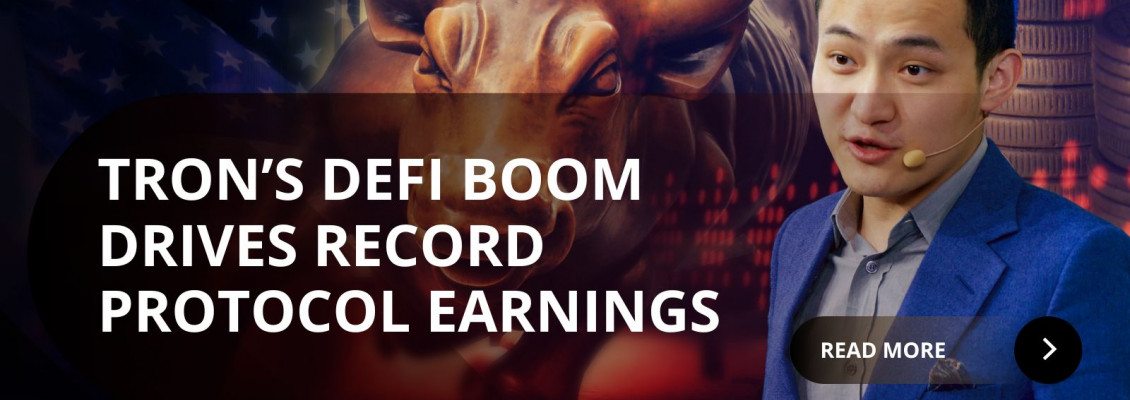
TRON Sets Revenue Record as Ecosystem Surges
TRON posted an all-time quarterly revenue high of US $1.2 billion in Q3 2025, marking a significant milestone for the blockchain’s growth trajectory. Research firms including Messari, Presto Research and RWA.io cite a powerful confluence of stable-coin dominance, high transaction volume and ecosystem expansion as the main levers behind this surge.
What’s Driving the Growth?
Stablecoin and Settlement Layer Leadership
TRON has become a major global settlement layer for dollar-pegged stablecoins, especially USDT. According to Presto Research, the chain handled more than US $24 billion worth of USDT transfers daily, enabled some 9.19 million transactions per day across over 334 million accounts. It now leads stable-coin volumes in numerous emerging markets including India, Brazil, Nigeria and Vietnam.
This burgeoning stable-coin activity has powered a substantial share of TRON’s earnings.
DeFi, Futures and Ecosystem Expansion
Messari’s Q3 report highlights TRON’s DeFi sector as a standout performer. The platform’s core lending protocol (JustLend) grew its total value locked from about US $3.4 billion to US $5.0 billion in the quarter, a near 46 % increase. A newly launched perpetual futures exchange (SunPerp) achieved over US $1.6 billion in trading volume within weeks.
These emerging layers show that TRON isn’t only a settlement chain but is also building deeper financial products.
User Growth and Engagement
On‐chain indicators reflect the momentum: wallet activity, new addresses, stable-coin transfers and non-traditional transaction types all rose. One report noted wallet transfers increased by ~10 % month-over-month; stable-coin transfers also ticked up modestly, while “other” transaction categories surged 38 %. The network remains heavily weighted toward wallet transfers and stable-coin operations but the increasing share of DeFi and niche transactions hints at diversification.
Network Revenue Mechanics
Revenue drivers include transaction and protocol fees, staking and token burns. TRON’s transparent performance shows that high volume of low-fee transactions can still translate into meaningful revenue when scale is achieved. TRON leap-frogged multiple chains in reported protocol revenue for recent quarters, underscoring its efficiency and utility.
Why It Matters
Competing with Big Chains
While many blockchains focus on smart-contract ecosystems, TRON’s standout performance in revenue and stable-coin throughput sets it apart. In Q3 TRON’s earnings outpaced chains typically seen as more dominant. This reversal positions TRON as a serious contender not only in emerging-market rails but also in institutional settlement layers.
Emerging Markets Play
TRON’s strength in markets with high inflation, currency instability and demand for dollar-pegged alternatives gives it a structural advantage. That focus enables it to capture users and flows that legacy chains may not serve as efficiently.
Institutional and Product Implications
High revenue and strong engagement bolster TRON’s story when seeking institutional partnerships, product integrations and global reach. With large-scale stable-coin activity, it becomes an attractive infrastructure layer for enterprises, exchanges and regional payment systems.
What to Watch
-
How TRON continues evolving its DeFi and perpetual-futures stack.
-
Whether stable-coin volumes continue growing or face regulatory or competitive headwinds.
-
TRON’s ability to retain or grow share in emerging-market payment rails.
-
Impact on TRX token economics, governance, staking yields and decentralization narrative.
Final Thoughts
TRON’s record US $1.2 billion Q3 revenue isn’t a flash in the pan — it reflects a mature settlement platform capturing high-volume dollar-denominated flows, combining scale, utility and global market reach. While many chains rely on speculative traffic, TRON’s business model leans into transactional utility and emerging-market settlement rails.
If TRON can continue building deeper financial products, retain stable-coin leadership and serve emerging-market needs, it may shift from being a strong competitor to becoming a foundational layer in global digital finance.

Leave a Comment